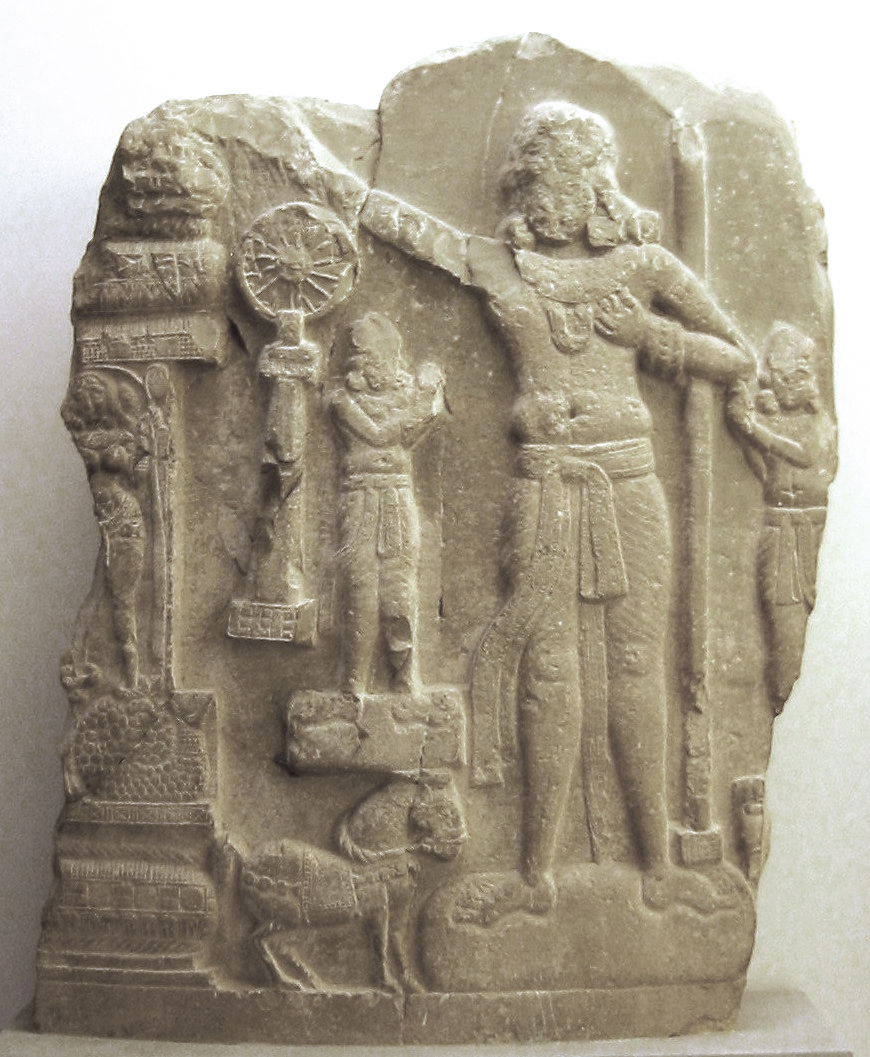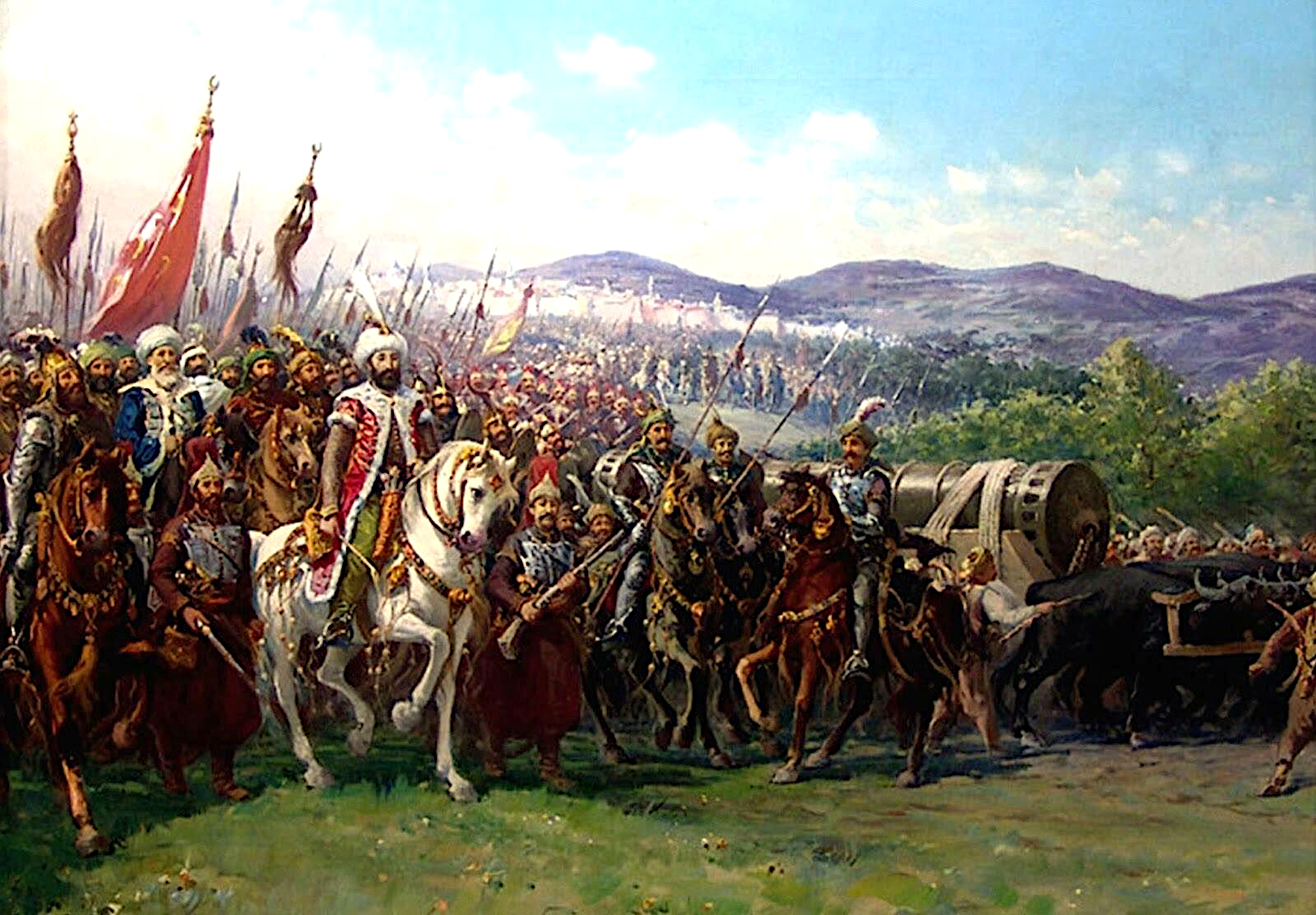NJ Bridgewater
19 December 2016
History is shaped by many singular events
which echo throughout the ages, such as D-Day, the fall of the Soviet Union and
9-11. In religion, also, there are a few key events which have altered the
course of history.
 |
| A depiction believed to be of Emperor Ashoka |
1. The Conversion of Ashoka
Ashoka was the third monarch of India’s
Maurya dynasty who was noted for his piety and virtue.[i] Early
in his reign, he decided to conquer the state of Kalinga, which prided itself
on its sovereignty and democracy. The conquest was a bloody one, with over
100,000 people being killed—from the Kalinga alone—as well as 10,000 of
Ashoka’s own forces. The whole state of Kalinga was ravaged and plundered by
the emperor’s army.[ii] One day, as he wandered
through the city and saw all the burnt houses and dead bodies, he cried: “What
have I done?”[iii] This led Ashoka to adopt
the non-violent religion of Buddhism and he is said to have ruled wisely and justly
for the rest of his days.[iv]
| The Conversion of St. Paul on the road to Damascus |
2. The Conversion of St. Paul
St. Paul, originally called Saul of Tarsus,
was strongly opposed to Christians, as he regarded their practices as
idolatrous and objectionable. He travelled from synagogue to synagogue, urging
the punishment of Jews who accepted Jesus as the Messiah.[v] Then,
one day, on the way to Damascus, he had a life-changing vision. As he was
walking on his way to Damascus, he suddenly saw a light from heaven and a voice
which said: “Saul, Saul, why persecutest thou me?” He asked: “Who art thou,
Lord?” and the voice replied: “I am Jesus whom thou persecutest.”[vi] From
then on, he took the name Paul and became one of the foremost disciples of
Jesus Christ, spreading the Gospel to the Gentiles. It is difficult to imagine
Christianity today had Saul of Tarsus not received his vision on the road to
Damascus.[vii]
 |
| The Siege of Jerusalem |
3. The Siege of Jerusalem
In 66 CE, a rebellion started in Judaea which
led to the final siege and destruction of Jerusalem by the Romans in 70 CE.[viii]
The siege began on 14 April 70 CE, during Passover, and the ensuing destruction
and death-toll was enormous. One defector to the Romans told Titus that the
total estimated number of dead was 115,880. The Jewish Temple was destroyed and
Jews were systematically expelled from Judea and scattered to the four corners
of the earth, leading to the modern Jewish Diaspora.[ix]
 |
| The Battle on the Mulvian Bridge |
4. The Vision of Constantine the Great
By the 4th century CE, Christianity was a growing but
still officially-proscribed religion. This changed, however, when the Emperor
Constantine I experienced a vision which forever changed the course of Western
history.[x] It
was while faced with the forces of the Western Roman Emperor Maxentius on the
Mulvian Bridge over the River Tiber that Constantine saw a flaming cross in the
sky which bore the words “in this sign thou shalt conquer”.[xi]
The prophecy proved to be true and he defeated his enemy on that day. This
occurred in 312 CE and, the following year, Constantine signed the Edict of
Milan, which granted religious tolerance to Christians. Constantine went on to
build a new capital at Byzantium, which became known as Constantinople, and
later as Istanbul. Freed from centuries of oppression, Christianity now spread
throughout the empire.[xii]
| Yathrib / Medina |
5. The Hijrah of the Prophet Muhammad
The Prophet Muhammad (c. 570 – 632 CE) was
forty years’ old when he received his first Revelation from the Angel Gabriel. His
teachings proved controversial, as he lived in a largely polytheistic society.
The city’s temple, called the Kaaba, was surrounded by polytheistic idols which
were maintained and protected by the local tribe, called the Quraysh. The
Quraysh felt threatened by Muhammad’s teachings and began to persecute Muhammad
and his followers. The persecution increased to such a point that he had to
leave Mecca and seek refuge in the town of Yathrib (now Medina).[xiii]
This emigration, which occurred in 622 CE, is known as the Hijrah.[xiv]
In Medina, Islam was widely embraced by the population and Muhammad established
the first Islamic state.[xv]
From Mecca and Medina, the religion then spread throughout Arabia and the world.
 |
| The Conquest of Baghdad |
6. Hulagu Khan’s destruction of Baghdad
The Mongol ruler Genghis Khan died in 1227 CE
and, upon his death, his empire was divided into five parts. One of Genghis
Khan’s grandsons, Hulagu Khan (c. 1218 – 1265), was based in Isfahan in Persia.
In 1257 CE, in the winter, Hulagu moved towards Baghdad.[xvi]
Baghdad was then the capital of the Abbasid Caliphate, which presided over the
Golden Age of Islam.[xvii]
In June of 1258 CE, Baghdad surrendered. The sacking of Baghdad which followed
lasted a week, with up to a million inhabitants being slaughtered.[xviii]
The great Golden Age of Islam, which had resulted in tremendous advancements in
science, technology, arts and culture, was brought to a swift end.[xix]
 |
| The Conquest of Constantinople |
7. The Conquest of Constantinople
Constantinople, the city of Constantine the
Great, was the capital of the Eastern Roman Empire, later known as the
Byzantine Empire. In 1453 CE, the Ottomans, a Turkish dynasty, decided to
conquer what was then one of the greatest centres of Christendom. The Ottoman
sultan, Mehmed II, conquered the city on the 29th of May 1453.[xx] The
conquest of Constantinople led to end of the Byzantine Empire and the beginning
of the Ottoman Empire, which lasted until the early 20th century. It
ruled over vast stretches of the Middle East, North Africa and Eastern Europe,
spreading Islam and unifying the Sunni Islamic world.[xxi]
 |
| Martin Luther posting the 95 theses |
8. The Posting of the 95 Theses
Martin Luther (b. 1483 CE) was a German
monk and theologian who began teaching at the Unversity of Wittenberg in 1512
CE. In 1510 CE, he visited Rome and was incensed by the corruption and abuses
of the clergy there. Angered by what he had seen, on 31 October 1517, he
published his famous 95 theses, which attacked both papal abuses and the
selling of indulgences. From 1519 – 1520, he wrote pamphlets developing his
main theological ideas, teaching that Christians receive salvation through
faith alone and not through works, in contrast to the Roman Catholic dogma that
salvation is through both faith and works.[xxii]
His teachings led to the Protestant Reformation and he Christian world has
never been the same since.
 |
| The Room in which the Báb made His Declaration in 1844 in Shiraz, Persia |
9. The Declaration of the Bāb
In the middle of the 19th
century, a merchant from the city of Shiraz in Iran called Sayyid ‘Alī Mohammad
Shīrāzī (1819 – 1850), announced that he was the Bāb (Arabic for ‘door’ or
‘gate’) to the Promised One, i.e. the Mahdī expected in Islamic prophecies.[xxiii]
On the evening of the 22nd of May 1844, Sayyid ‘Alī Mohammad made
his famous declaration to Mollā Hosayn that he was, indeed, the Promised One
expected in Islam. Mollā Hosayn and other followers then spread the message of
the Bāb, initiating the Bābī movement in Iran, which later became known as the
Bahā’ī Faith.[xxiv] There are currently
over five million Bahā’īs worldwide, living in over 100,000 localities across
the globe. The Bahā’ī Faith is now the second most widespread religion on the
planet.[xxv]
 |
| The Last Caliph |
10. The abolition of the Caliphate in
1924
From the time of the Prophet Muhammad up
until the downfall of the Ottoman Empire, there had always been caliphates
which had maintained some form of unified leadership for the Islamic—or at
least Sunni—world. In 1517, the Ottomans
forced the last Abbasid caliph to give up his title, which passed to the
Ottoman ruler, Sultan Selim, the first Ottoman caliph.[xxvi]
For several centuries, they ruled over most of the Middle East and North
Africa. However, in the aftermath of World War I, Turkish Nationalists ended
the Ottoman sultanate and, on the 8th of March 1924, abolished the
institution of the caliphate.[xxvii]
This has had great repercussions within the Sunni Islamic world and has led to the modern Middle East that we know today.
* If you liked this blogpost, please make sure to follow the author on Twitter @Nicholas19
-->
[i] https://www.cs.colostate.edu/~malaiya/ashoka.html
[ii] http://www.newworldencyclopedia.org/entry/Ashoka
[iii] http://www.newworldencyclopedia.org/entry/Ashoka
[iv] https://www.cs.colostate.edu/~malaiya/ashoka.html
[v] https://www.britannica.com/biography/Saint-Paul-the-Apostle
[vi] http://www.drbo.org/chapter/51009.htm
[vii] https://www.britannica.com/biography/Saint-Paul-the-Apostle
[viii] http://www.livius.org/ja-jn/jewish_wars/jwar04.html
[ix] http://www.jewishvirtuallibrary.org/jsource/History/Diaspora.html
[x] http://www.antiochian.org/node/18634
[xi] http://www.livius.org/ja-jn/jewish_wars/jwar04.html
[xii] http://www.livius.org/ja-jn/jewish_wars/jwar04.html
[xiii] http://www.bbc.co.uk/religion/religions/islam/history/muhammad_1.shtml
[xiv] https://www.britannica.com/event/Hijrah-Islam
[xv] http://www.bbc.co.uk/religion/religions/islam/history/muhammad_1.shtml
[xvi] http://www.fasebj.org/content/20/10/1581.full
[xvii] https://historyofislam.com/contents/the-post-mongol-period/the-fall-of-baghdad/
[xviii] https://historyofislam.com/contents/the-post-mongol-period/the-fall-of-baghdad/
[xix] http://www.fasebj.org/content/20/10/1581.full
[xx] https://www.britannica.com/place/Ottoman-Empire
[xxi] http://www.eyewitnesstohistory.com/constantinople.htm
[xxii] http://www.bbc.co.uk/history/historic_figures/luther_martin.shtml
[xxiii] http://www.iranicaonline.org/articles/bab-ali-mohammad-sirazi
[xxiv] http://www.bbc.co.uk/religion/religions/bahai/history/bab_1.shtml
[xxv] http://news.bahai.org/media-information/statistics
[xxvi] http://www.allaboutturkey.com/halife.htm
[xxvii] http://www.economist.com/node/11829711